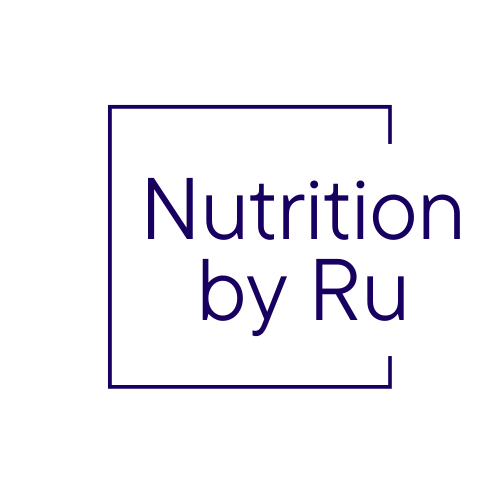
Sugar: Why I eat fruit instead of drinking a fruit smoothie
Rusne ZalnoraiteWe often judge the healthfulness of our food in terms of nutrients we find stated on the labels - carbohydrates, fats and proteins, as well as vitamins and minerals. This emphasis on nutritional content is referred to as ‘nutritionism’ [1].
But foods aren’t just random mixtures of nutrients. In fact, foods are systems where nutrients exist in complex microstructures that not only determine the nutritional properties, but also the health implications of our foods.
The NHS recommends cutting down on fruit juices, but not whole fruits [2]. That is because processing has a large impact on structure and hence nutrition and health implications.
So let’s delve deeper into the topic of sugars.
The Food Matrix and Sugar
We know that sugars found in fruit juices are referred to as ‘free sugars’. In contrast, the sugars in whole fruit - are not [3]. Confusing right?
Sugar molecules are the same no matter the source [4]. Therefore, any differences in health outcomes linked to the consumption of free versus total sugars come mainly from effects of the structures sugars are found in. These structures are also referred to as food matrices [1].
When consuming whole fruits, we ingest structures such as plant cell walls which are the main contributors of fibre in our diet [5]. In juices, the majority of dietary fibre has been lost as a result of pulp separation [6,7].
This has direct physiological effects, such as:
- Bioavailability of nutrients
- Gastric emptying
- Fullness
Bioavailability
During digestion, nutrients are broken down and modified to become available as absorbable units [1]. Whilst our bodies are efficient, we do not absorb 100% of what we consume. Dietary fibre may be one of the reasons why consumption of juice is associated with weight gain, whereas eating whole fruits isn’t. Several mechanisms have been suggested in literature (non-exhaustive list):
- Fibre has been shown to create physical barriers that prevent enzymatic breakdown, slowing down or impeding absorption of nutrients [1,9,10].
- Dietary fibre has been shown to interact with glucose transporters, reducing glucose uptake [10].
Gastric Emptying
This refers to the rate at which our food passes from the stomach into the small intestine. Dietary fibre has been shown to reduce the rate of gastric emptying by forming a viscous mass in the stomach [1,10]. In terms of sugar, this is beneficial because the rate at which sugars are absorbed is impeded, modulating our body’s insulin response [10,11].
Fullness
“Satiation (end of eating) and satiety (time between eating periods of hunger) are key factors in appetite control, hence, on the reduction in food intake during and between meals” [1].
- Fibre adds bulk to our foods, which is beneficial because the consumption of solid foods is associated with a lower energy consumption. That’s because solid foods expand the stomach more, upregulating ‘fullness’ signals [1].
- Fibre slows down gastric emptying, thus prolonging the feeling of fullness [1].
In summary, consuming sugar vs. sugar with cellular bulk changes the way we respond to the nutrient.
Why are we advised to cut down on ‘free sugars’ only?
We now know that when sugars exist in complex structures in whole fruit, vegetables and milk products, they have neutral or beneficial effect on weight gain, obesity, or diabetes [4,12]. In contrast, when foods contain large amounts of ‘free sugars’ such as that in fruit juices and sugar-based drinks, they carry a greater risk of increased energy intake and body weight [4].
Based on this evidence, various dietary guidelines advise to reduce the consumption of ‘free sugars’ and to consume wholefoods rich in high quality carbohydrates [3,12]. That in mind, remember the 80:20 principle to nutrition; as long as the majority of your diet is balanced and based on wholefoods, enjoying an occasional cupcake is absolutely fine!
So here you have it, a quick run through on sugars from a slightly different perspective of food structures. I hope that this will nudge you to look, choose and eat wholefoods with a bit more fascination!
References
- Aguilera, J.M. 2019. The food matrix: implications in processing, nutrition and health. Critical Reviews in Food Science and Nutrition. 59(22), pp.3612-3629.
- Fardet, A. 2015. A shift toward a new holistic paradigm will help to preserve and better process grain products' food structure for improving their health effects. Food Funct. 6(2), pp.363-382.
- National Health Service. 2020. Sugar: the facts. Available at: https://www.nhs.uk/live-well/eat-well/how-does-sugar-in-our-diet-affect-our-health/
- Mela, D. and Woolner, E.M.J.A.i.N. 2018. Perspective: Total, Added, or Free? What Kind of Sugars Should We Be Talking About? 9, pp.63 - 69.
- Augustin, L.S.A., Aas, A.-M., Astrup, A., Atkinson, F.S., Baer-Sinnott, S., Barclay, A.W., Brand-Miller, J.C., Brighenti, F., Bullo, M., Buyken, A.E., Ceriello, A., Ellis, P.R., Ha, M.-A., Henry, J.C., Kendall, C.W.C., La Vecchia, C., Liu, S., Livesey, G., Poli, A., Salas-Salvadó, J., Riccardi, G., Riserus, U., Rizkalla, S.W., Sievenpiper, J.L., Trichopoulou, A., Usic, K., Wolever, T.M.S., Willett, W.C. and Jenkins, D.J.A. 2020. Dietary Fibre Consensus from the International Carbohydrate Quality Consortium (ICQC). 12(9), p2553.
- Perussello, C.A., Zhang, Z., Marzocchella, A., Tiwari, B.J.C.R.i.F.S. and Safety, F. 2017. Valorization of Apple Pomace by Extraction of Valuable Compounds. 16, pp.776-796.
- Chu, J., Igbetar, B.D., Orfila, C.J.J.o.N. and Sciences, F. 2017. Fibrous Cellular Structures are Found in a Commercial Fruit Smoothie and Remain Intact during Simulated Digestion. 7, pp.1-5.
- Fardet, A. and Rock, E. 2019. Processing changes the food we eat – here’s what that means for our bodies. Available at: https://theconversation.com/processing-changes-the-food-we-eat-heres-what-that-means-for-our-bodies-123387
- Turgeon, S. and Rioux, L.-E.J.F.H. 2011. Food matrix impact on macronutrients nutritional properties. 25, pp.1915-1924.
- Qi, X., Al-Ghazzewi, F. and Tester, R.J.S.-s. 2018. Dietary Fiber, Gastric Emptying, and Carbohydrate Digestion: A Mini Review. 70, pp.1700346.
- Bolton, R.P., Heaton, K.W. and Burroughs, L.F. 1981. The role of dietary fiber in satiety, glucose, and insulin: studies with fruit and fruit juice. Am J Clin Nutr. 34(2), pp.211-217.
- Shafaeizadeh, S., Muhardi, L., Henry, C.J., van de Heijning, B.J.M. and van der Beek, E.M. 2018. Macronutrient Composition and Food Form Affect Glucose and Insulin Responses in Humans. Nutrients. 10(2), pp.188.
